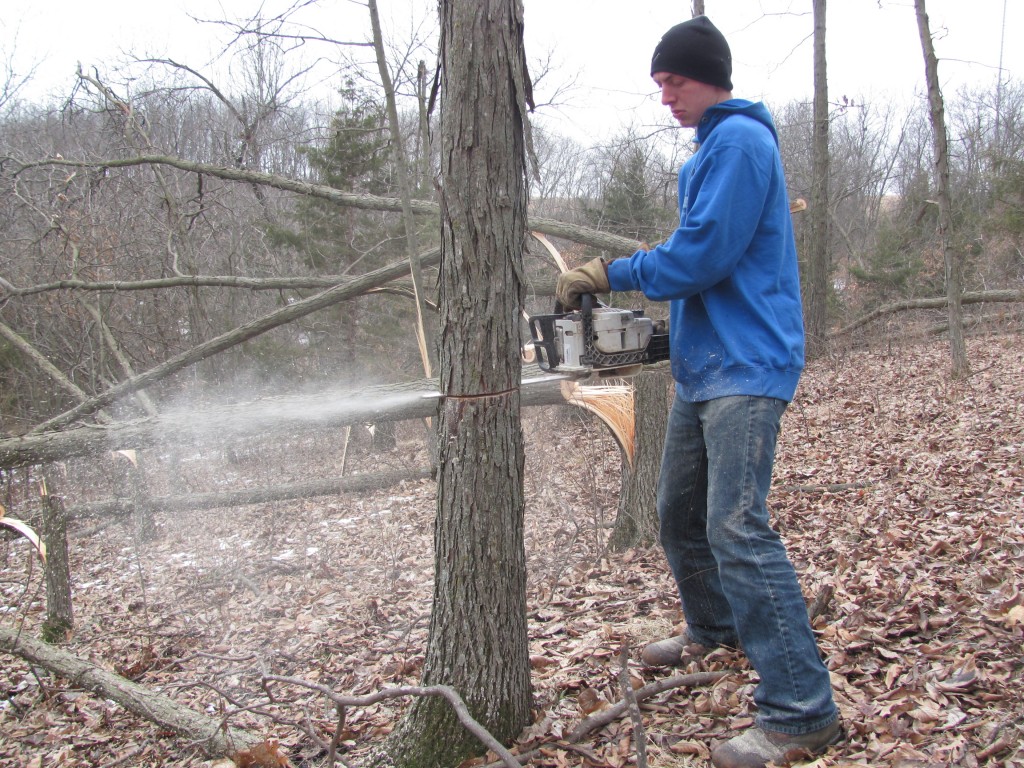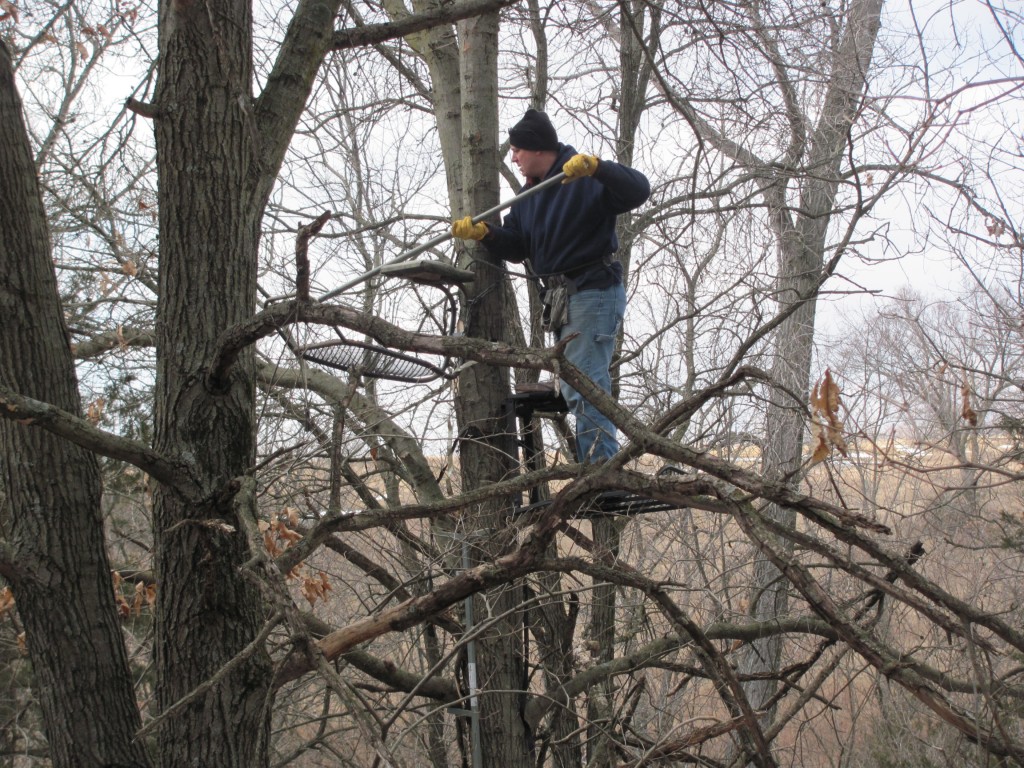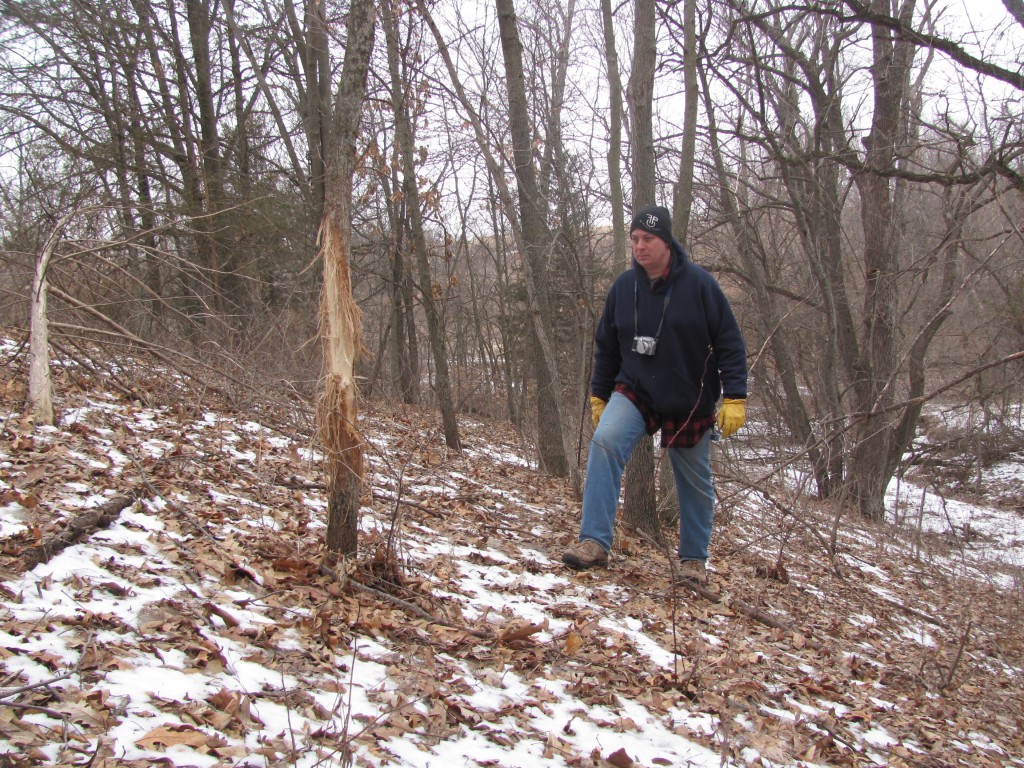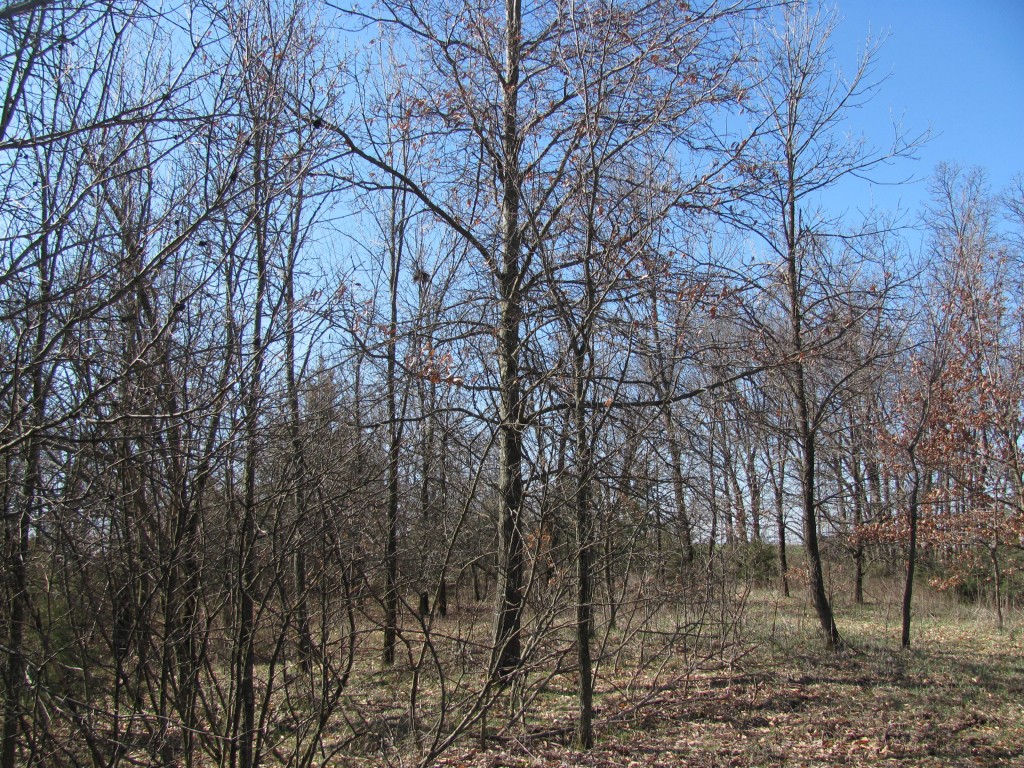Late winter and early spring are among the best times of the year for habitat improvements and getting your stand sites ready for fall. Habitat improvements don’t get a lot of attention because quite frankly there isn’t a lot of sponsor money out there in the hunting industry for habitat management. But, habitat improvements will give you the most return on investment when managing your deer herd. Don’t get me wrong, I love putting in food plots…but creating exceptional habitat is second to none.

Again this year, we planned out a couple more small spots to create pockets of cover for bedding and security cover. This is my son Forest cutting down a shagbark hickory. Small thickets or pockets of cover are great ways to improve habitat. This area is a small end of a ridge facing east. Deer love bedding on east or southeast facing ridges as they can soak up the morning sun on cool mornings during the fall.
I like to do most or all of my stand maintenance in late winter if I can. This includes scouting the spots and hanging stands as well as cutting the shooting lanes at each stand site. I am a firm believer in wider shooting lanes out to 35 or 40 yards for archery stands. There is nothing more frustrating than having a good buck slip by because you don’t have good shooting lanes or they have grown in and haven’t been maintained. This is the best time of year to do this because your hunting grounds look pretty much like they were last fall, you can make all the noise you need, and the local deer herd will have 8 or 9 months to get used to the intrusion. Having good stand sites paying attention to detail, and having exceptional habitat should be a top priority.

When I cut in my archery shooting lanes I like to make them a little longer and wider than it seems you might need. Remember, they will grow back in and nothing is more frustrating than having a shooter in ranger without an open shot. This is a double stand set up for filming in one of my favorite morning sets.

Late winter is great for scouting and doing stand maintenance. You can walk your property without worrying about affecting your hunting this fall. Once fall comes around, you need to have already figured out what is going on and how the deer move…fall is not the time to be bumbling around scouting.
Late winter and early spring is the time of year to locate and work on putting in “Interior” food plots. If you haven’t heard me talk about these before let me take a little time to explain what I am doing here. An Interior plot is simply a small food plot located back off of agriculture fields inside the timber. You should spend hours and hours planning these plots before you ever cut a single tree, clear any brush, or plant any seed.

An interior plot can be located any place you have the back and will to put them. Plan them out before you ever cut a tree or plant a single seed. The right location in this case is more important than any thing else.
These are plots you are going to want to hunt and hunt hard. Make sure you can get in without bumping deer. Above all, plan them out so that if possible the deer can’t or won’t get down wind of you. Let me lay out some ideas for you to get you started: First, interior plots that are just off the edge of exterior plots or ag fields are great locations. Better yet, if you can locate one 50 or 75 yards in the timber with a road or lane leading straight out to the ag fields works great too. If possible, locate them at ridge tops or benches on ridges where you can hunt the down wind side of the plot and your scent goes out over the valley…the steeper drop off the better on the down wind side.

This narrow lane leads back to an interior plot. This interior plot is located just off of a preferred ag field. I can get in to this spot on evening hunts without getting busted. Bucks love to scrape and work the interior plot before going out to the ag fields.
Great set ups are having the interior plot out in front of you with the wind in your face or at your side. This way deer can enter the plot and leave for the exterior plots and ag fields without getting down wind. If you hunt flatter ground, try putting a creek or body of water on your down wind side. The point is simple….interior plots are put in where you want them. Unlike ag fields, the planning is the most important part. Plan hunting interior plots the whole season and sitting them all day or long hours during the rut.
